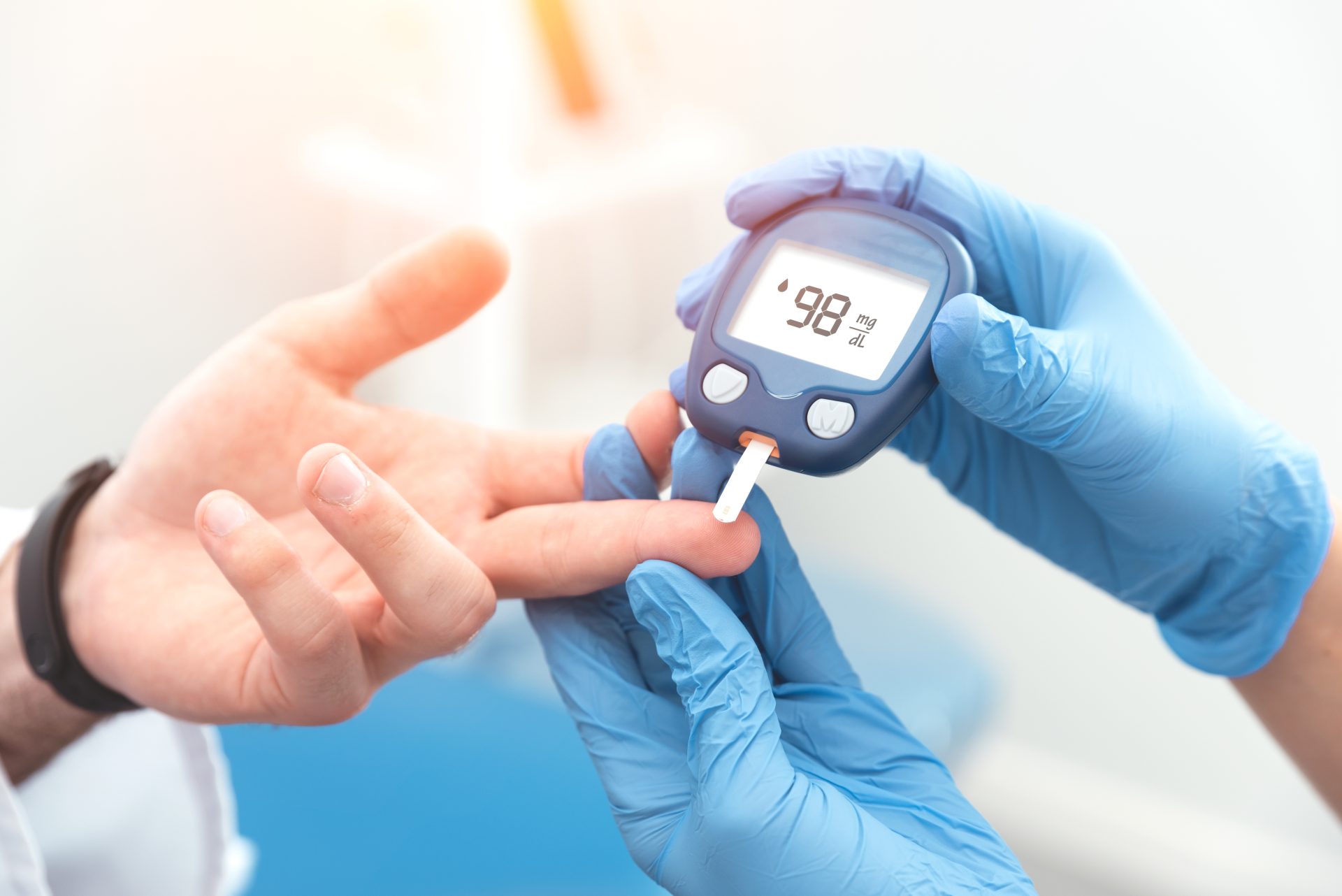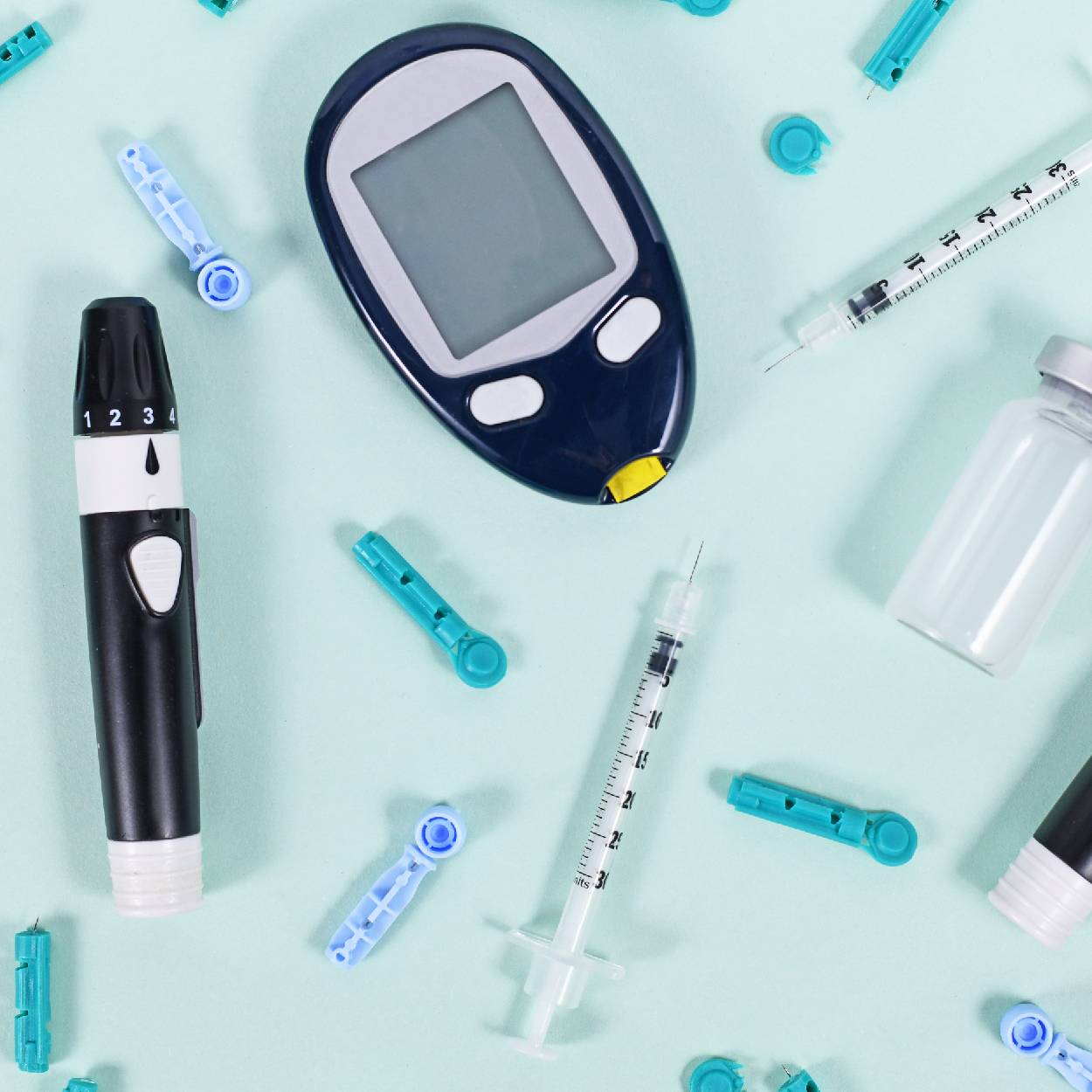Marlisa Brown, MS, RD, CDE, CDN has been working with these types of patients and helping them transition to a gluten-free diet. She offers some advice on recognizing possible celiac disease in those suffering with type 1 diabetes and offers strategies to help patients thrive on specialized diets.
By: John Parkinson, Clinical Content Coordinator, DiabetesCare.net
Left untreated, celiac disease can be a very debilitating and dangerous condition. It can cause abdominal pain and diarrhea and in the long term cause damage to the small intestines and malabsorption of necessary nutrients like vitamin D, folate, and iron.
Recent research has indicated that celiac disease appears to be increasing in prevalence in the overall population, but it is also being seen in a greater number of people with type 1 diabetes. In recent years, researchers have suggested a correlation between celiac disease and type 1 diabetes. While both are autoimmune diseases and they share some common genes, no causation relationship has been established yet.
As such, medical providers who care for patients with diabetes are beginning to see patients who might be at risk for celiac disease as well. Unfortunately, many medical providers have little professional training on teaching patients how to manage these two disorders. The question is when do medical professionals begin to start screening patients for celiac disease and how do they treat patients diagnosed with celiac disease with a gluten-free diet.
Marlisa Brown, president of Total Wellness, a private nutrition consulting business in Bay Shore, NY, has become an expert in gluten-free diets, making presentations on the subject as well as co-authoring one book, Easy, Gluten Free and writing another Gluten-Free Hassle-Free (pictured, below) on her own. Brown also has a website dedicated to the topic.
Although Brown (pictured, above) has been treating patients with celiac disease for over 17 years, her road to becoming a gluten-free expert grew after a single patient encounter, which created a sort of epiphany for her. About seven years ago, she had a woman who came to see her who had a whole host of health issues ranging from hair loss to autoimmune problems to difficulty walking from rheumatoid arthritis pain. This patient had been to several doctors and found no relief to her ongoing problems.
Brown had studied the research which indicated a relationship between these types of disorders and celiac disease, so she worked with this patient to see if this was her underlying health issue. Subsequently, they did identify that it was, which indicated the need for a gluten-free diet. Within several months of maintaining a gluten-free diet, many of this woman’s health issues were resolved.
While it is both a growing health issue and treatment can seem complicated, acknowledges Brown, she says medical providers can find solutions to make it easier for their patients to address celiac disease and also stay healthy and safe with their diabetes.
With her breadth of knowledge on the subject, DiabetesCare.net talked with Brown about which type 1 diabetes patients should be tested for celiac disease, how to begin to incorporate a gluten-free diet, and some successful long-term strategies for a gluten-free lifestyle.
DiabetesCare.net: How did you get involved in gluten-free diets, celiac disease, and type 1 diabetes?
Brown: Throughout the years, more and more people I was treating were being diagnosed with celiac disease. Not a huge amount, but it went from being one new celiac person every six months, then it evolved into one new person every three months, until it eventually became a regular occurrence.
Years ago, identifying foods with hidden gluten was much more difficult than it is today. You had to call manufacturers on almost everything because ingredient panels didn’t make it easy to recognize which foods were gluten-free.
Patients would look to me to help them choose products asking questions like, ‘is this barbeque sauce safe to eat?’ Product information was constantly changing, so if you were not dealing with it on a daily basis, the information you were providing could be incorrect. So seeing a patient with celiac every few months did not make it easy to keep up with all the changes in food products.
One day, I had a woman come in to see me who had autoimmune problems and found herself with extremely debilitating conditions, including severe rheumatoid arthritis, abundant autoimmune problems, and even alopecia (autoimmune hair loss). She had been to other medical professionals but she couldn’t find any relief from her various conditions.
I had studied research on the autoimmune illnesses and how they relate to celiac disease, and so I helped this patient explore if celiac disease could be her underlying issue, which it turned out to be. After we began her on a gluten-free diet, her rheumatoid arthritis symptoms went away, her autoimmune problems subsided and even her hair grew back. It was a revelation for me. From that moment forward, I got really involved in studying all new celiac research and implementing dietary changes.
DiabetesCare.net: What is the best advice to fellow diabetes educators in how they should approach their type 1 patients and celiac disease in terms of testing? Should all type 1s be tested or only when they are other underlining symptoms?
Brown: Recent research has shown that celiac disease is much more prevalent than previously thought. The incidence rate between those who have celiac disease and type 1 diabetes is between 10 to 15 percent.
If you read the standards of care for the American Diabetes Association, they recommend everybody with type 1 diabetes be screened for celiac disease. If celiac disease is found in a person, the medical recommendation is that all his or her own first degree, blood relatives should also be screened for celiac disease.
The relationship between celiac disease and type 1 diabetes has long been explored. In 2008, The New England Journal of Medicine published the results of a study, which indicated that there was a defect chromosome in people with type 1 diabetes that was the same as those who have celiac disease. While type 1 diabetes and celiac are both autoimmune diseases, researchers have not completely connected the relationship between the two conditions. Still there is a higher prevalence for type 1 diabetes and celiac disease then that of the general population.
If someone came in to see me who had type 1 diabetes and had been previously screened for celiac disease and the results came back negative but they had unexplained gastrointestinal or autoimmune issues, I would suggest they be screened again. Celiac can occur at any age and often current testing methods can misdiagnose someone.
Although some cultures have a higher prevalence for developing it, celiac disease will affect approximately 1 in 100 people regardless of sex, age, culture or ethnicity. In addition, the typical symptoms for a celiac patient exhibiting characteristics such as malnourishment, being underweight, and suffering from GI symptoms does not account for all those with celiac disease. In fact, there are many overweight asymptomatic individuals with the disorder.
DiabetesCare.net: Can you provide an overview of what a gluten-free diet is exactly?
Brown: In the simplest terms, it is about not eating anything with wheat, rye, and barley.
So if you are going to eat just fresh things, like fruits and vegetables, unmarinated meat, chicken, and fish, gluten-free grains, and milk that have not had anything added to them, then you are generally acting safely. While gluten-free labeling doesn’t always ensure foods marked gluten-free are always safe, since labeling laws have not passed yet, usually buying products marked gluten-free are safe.
However, it gets complicated when it comes to packaged foods. Gluten is often used as part of the processing or is added as a filler to many foods. So what happens is that foods that were relatively safe in the beginning stages, may no longer be safe for someone.
Another consideration is cross-contamination. Even the smallest amount of gluten, can be enough to make someone ill. Examples of cross contamination include shared cutting boards, or condiments that have been previously used in containers, or toasters that have had gluten in them, or even baking sheets with some residue. Something as small as a bread crumb is enough to be a problem for someone with celiac disease.
For dietary issues, celiac disease is much more unforgiving than type 1 diabetes for any tiny mistakes. A person with celiac disease has to have 100% avoidance of gluten, always. With type 1 diabetes, people can adjust their insulin for additional carbohydrates, making it possible to fit most foods into their diet.
Dietary compliance for celiac disease and type 1 diabetes can be difficult for a patient, so a healthcare provider who specializes in both can make this transition livable instead of overwhelming.
DiabetesCare.net: How do you set up a person with type 1 diabetes to have a gluten-free diet and are there any challenges for doing both?
Brown: What I try to do is to look at general dietary needs, the patient’s needs, and other health issues before developing a meal plan for a patient. I would begin by determining a patient’s macronutrient (proteins, fats, and carbs) requirements and consider his or her diabetes management needs first.
Second step, I would ask the patient about their favorite foods and what they generally eat for each of their meals and snacks. I would make up a meal plan with several choices for each of their meals and snacks based on their current dietary choices meeting the macronutrient needs I determined. I would review the meal plan suggestions with the patient and then I would work on how to convert their favorites into gluten-free choices. This makes it easier for them to start. I even give them shopping tips to make sure they purchase safe/tasty gluten-free choices.
In addition, I would also provide them with lists of gluten-free safe foods, give them the names of celiac support groups, gluten-free restaurants, books, and teach them how to modify recipes. I always stress the importance of local support groups, especially for patients who are traveling. For example, there are many local support groups throughout the country.
Often, if you e-mail a larger, national celiac support group, they can help you find a local group, and they can let you know which places to eat, and where to pick up gluten-free products in the area.
I also stress to people the importance of questioning information, even from trusted sources. I have had patients who stayed sick for months after being discharged from a hospital, only to find out that the culprit was a food brand they were fed in the hospital that was not gluten-free and they continued to eat it after they were discharged. One little mistake like that can lead to horrible consequences.
DiabetesCare.net: For purchasing food at the supermarket, what should people with celiac disease be looking for on processed food labels?
Brown: While we don’t have laws for gluten-free labeling yet, the Food Allergen Labeling and Consumer Protection Act (FALCPA) law was passed. FALCPA made things a little easier by requiring that wheat must be prominently displayed on the ingredient listings on packaged foods. However, this law does not include other gluten containing starches such as rye or barley.
Fortunately, the foods that have rye in it would normally be a baked product so a person with celiac would typically not be selecting these foods because it would likely have wheat. As for barley, it is usually added as a flavoring agent. In these cases, it often says malt, or barley malt. When in doubt, always call the manufacturer.
It is important to consider that these labeling laws apply only to packaged foods regulated by the FDA; meats and poultry are regulated by the USDA and they do not have the same rules as the FDA. People do need to be aware that they must check to see if meats and poultry has been flavored, basted, injected, or marinated as they may have agents added that contain gluten.
Generally speaking, most products regulated by the USDA are labeled similar to the FDA foods but it is only optional, making it necessary to double check all USDA products. Fortunately there are many books updated annually that have called manufacturers and identified gluten-free choices.
Also, most distilled alcohol and wines are gluten-free, except for beer. Only buy beer labeled gluten-free. Take care with wine coolers and other drinks that are not distilled or those that may have flavoring agents added. Alcohol is not required to follow the same rules as packaged foods.
If a product has several ingredients, contains lots of flavorings, and you don’t know exactly what’s in it, again you can call upon companies to find out if it is a safe product.
For food companies who are claiming they have gluten-free products, another thing to do is to go online and look at these companies’ protocols on how they determine if a food product is gluten-free. There might be a certification, stating the product has met a particular standard and the company may state how they are determining the gluten-free status of their products.
DiabetesCare.net: What advice do you give to people with celiac disease in terms of eating out and looking for hidden sources of gluten?
Brown: In my book Gluten-Free, Hassle-Free and on my website, I have a list of dining-out sheets in fourteen languages. (There are dining-out websites in the list of resources written below.) People should find out what restaurants have gluten-free menus or call ahead to see if they can accommodate for a gluten-diet.
I also tell people don’t go during busy times to a restaurant that doesn’t have a gluten-free menu. Also stay clear of a place that doesn’t have an understanding of what gluten-free is, or if they look at you like you are crazy when you tell them your dietary needs. Planning ahead makes things a lot easier whether you are traveling out of town or eating out locally.
For anyone interested in contacting Brown, she can be reached by phone: (631) 666-4297 or e-mail: [email protected].
Marlisa Brown’s Recommended Gluten-Free Resources:
General Information:
For general gluten-free information and dining out sheets go to: www.glutenfreeeasy.com
For handouts, go to www.glutenfreediet.ca
Medications:
To look up gluten-free medications: www.glutenfreedrugs.com
Recommended Books:
Gluten-Free Hassle-Free by Marlisa Brown
Easy, Gluten-Free by Marlisa Brown and Tricia Thompson
Gluten-Free Diet, Comprehensive Resource Guide by Shelley Case
1000 Gluten-Free Recipes by Carol Fenster
Shopping:
The Gluten-free Grocery Guide by Matison, which lists many gluten-free brands
Dining Out and Travel:
Go to www.glutenfreerestaurants.org to search for some gluten-free restaurants, also email local celiac support groups.
Dining out guides: http://www.triumphdining.com
Gluten-Free traveling: http://www.glutenfreepassport.com
Support Groups:
Celiac.com
The Celiac Site
Research Centers:
Celiac Disease Research Center
National & International Organizations:
American Celiac Disease Alliance
Celiac Disease Foundation
Celiac Sprue Association
Gluten Intolerance Group of North America
National Foundation for Celiac Awareness
National Digestive Diseases Information Clearinghouse – Celiac Disease
North American Society for Pediatric Gastroenterology, Hepatology and Nutrition
National Institute of Diabetes and Digestive and Kidney Disease -Celiac Disease Awareness Campaign
Children’s Digestive Health and Nutrition Foundation
Educational Institutions:
Celiac Disease Clinic at Mayo Clinic
Celiac Disease Center at Columbia University
Celiac Center at Beth Israel Deaconess Medical Center, Harvard Medical School
University of Chicago Celiac – Disease Program
University of Maryland Center for Celiac Research
University of Virginia – Celiac Support Group




